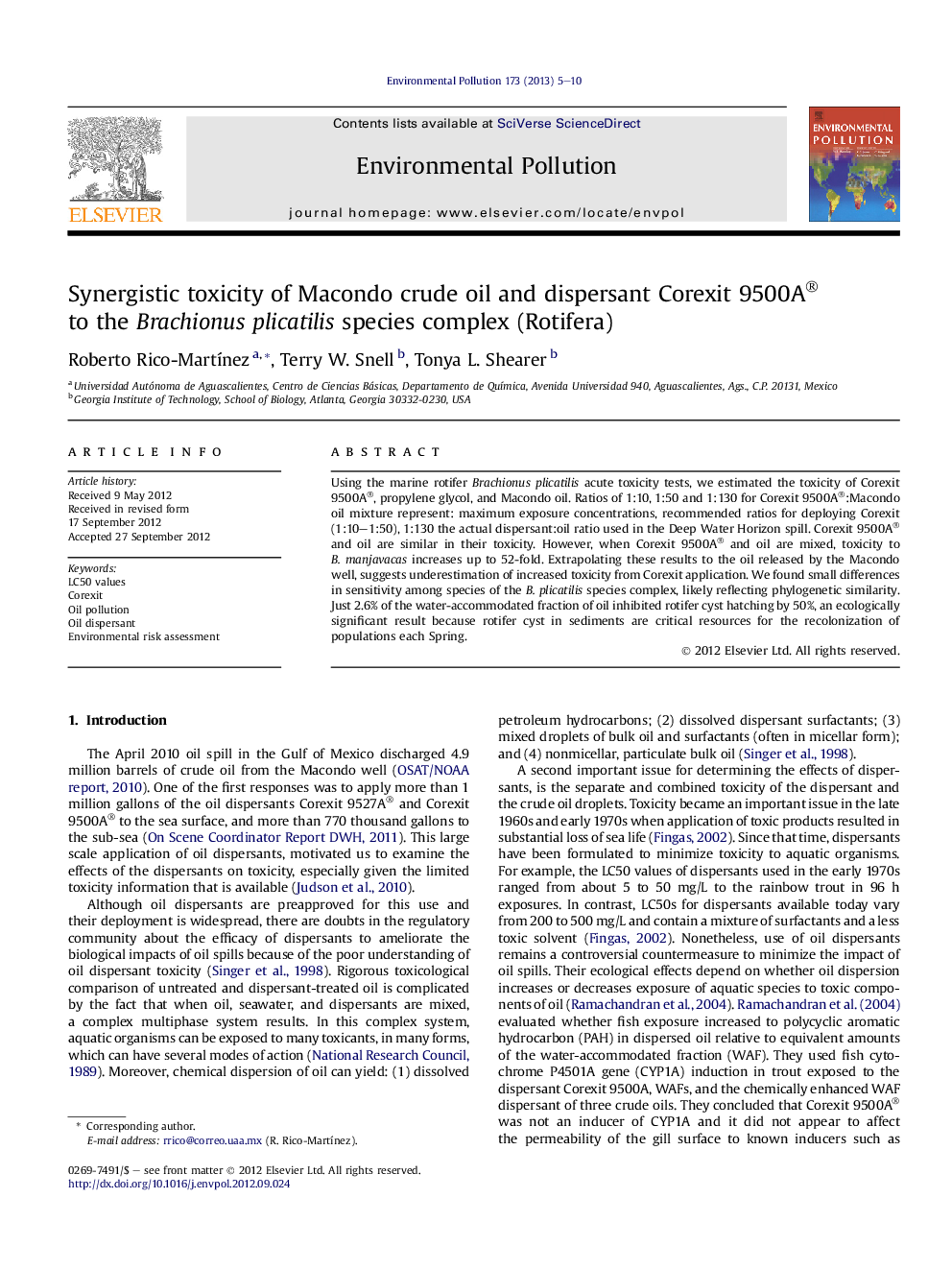| Article ID | Journal | Published Year | Pages | File Type |
|---|---|---|---|---|
| 4424464 | Environmental Pollution | 2013 | 6 Pages |
Using the marine rotifer Brachionus plicatilis acute toxicity tests, we estimated the toxicity of Corexit 9500A®, propylene glycol, and Macondo oil. Ratios of 1:10, 1:50 and 1:130 for Corexit 9500A®:Macondo oil mixture represent: maximum exposure concentrations, recommended ratios for deploying Corexit (1:10–1:50), 1:130 the actual dispersant:oil ratio used in the Deep Water Horizon spill. Corexit 9500A® and oil are similar in their toxicity. However, when Corexit 9500A® and oil are mixed, toxicity to B. manjavacas increases up to 52-fold. Extrapolating these results to the oil released by the Macondo well, suggests underestimation of increased toxicity from Corexit application. We found small differences in sensitivity among species of the B. plicatilis species complex, likely reflecting phylogenetic similarity. Just 2.6% of the water-accommodated fraction of oil inhibited rotifer cyst hatching by 50%, an ecologically significant result because rotifer cyst in sediments are critical resources for the recolonization of populations each Spring.
► We determined LC50's of Corexit 9500A®, propylene glycol, and oil to B. plicatilis. ► Corexit 9500A® and oil are equivalent in toxicity. ► When Corexit 9500A® and oil are mixed, toxicity increases 52-fold to B. plicatilis. ► Results suggest underestimation of increased toxicity due to Corexit application. ► Sensitivity differences are small among species of the B. plicatilis species complex.
